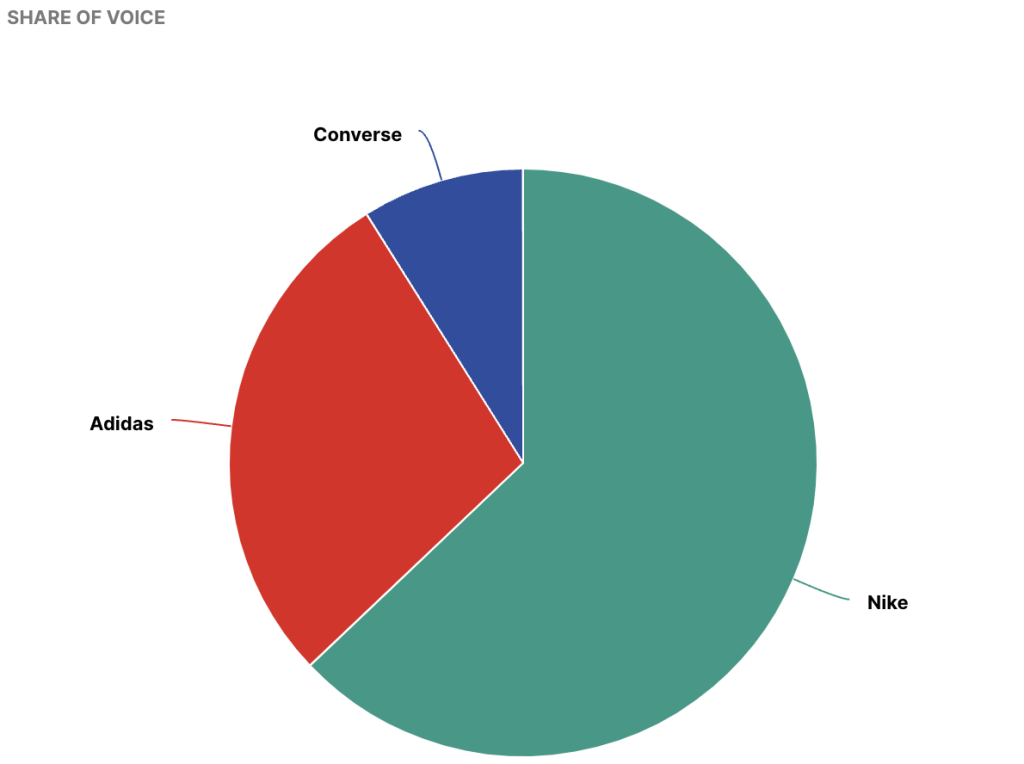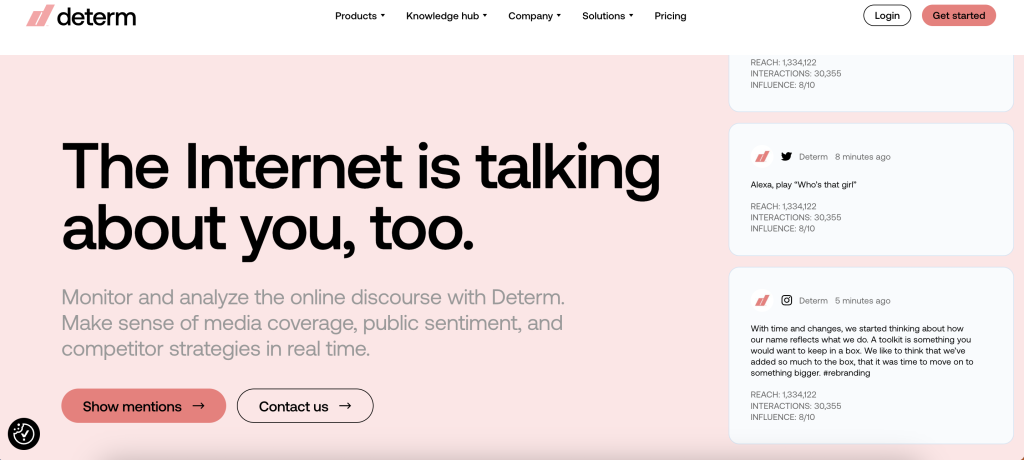Whether you’re a market leader or you’re just getting started, creating competitive analysis should be high on your priority list.
Competitor tracking provides you with concrete and actionable insights that can help you
- improve your product or service
- discover growth opportunities
- attract new customers and so much more.
Since competitive analysis is one of the most important factors in running a successful business, we compiled this blog with all the necessary information and tools one should know.
Let’s start with the big question first!
What is a Competitive Analysis?
“A competitive analysis is a strategy where you identify major competitors and research their products, sales, and marketing strategies. By doing this, you can create solid business strategies that improve upon your competitor’s.” HubSpot
As the definition suggests, competitive analysis includes a lot of different variables that you need to pay attention to.
However, be careful not to fall into the trap of only monitoring competitor activity, and forget about your customers. Yes, competitor tracking is important, but you’re not here because of them. You’re here because of your customers.
Just because a competitor is doing something (or not doing something) does not automatically mean that you should or shouldn’t do it too. Make sure you have set clear goals for what you want to do and let that guide your decisions. As we’ve already mentioned, competition analysis is ONE of the most important factors, but it’s not the only one.
Read How to Use Media Monitoring for Competition Analysis
The Purpose of Competitive Analysis
The purpose of competitive analysis is to discover:
- who are your competitors,
- what are their strengths and weaknesses,
- benchmarking,
- what type of customers they have,
- what marketing strategies they use…
…the list goes on!
The important thing is to cover a lot of different aspects, but focus only on the ones relevant to your business.
For example, if you notice your competitor is in some type of crisis, monitor closely what caused it, how they’re responding and how the customers are reacting. By doing so, you’ll learn from their mistakes and avoid the same thing happening to you.
The more you know and understand about your competitors, the better decisions you’ll make.
Benefits of Competitive Analysis
The benefits of doing competitive analysis are vast.
We’ve already hinted some of them earlier in the article, so here’s a detailed explanation of what we exactly meant.
1. Performance evaluation
The most obvious benefit that you can get from the competitive analysis is finding out how your brand performs in comparison to your competitors.
It may be that the situation is better than you thought, but there’s also a possibility it can be worse. In both cases, it’s useful to have insightful and actionable data to guide your future business decisions.

2. Product development
By analyzing the competitors’ products and customers’ reactions to their products, you can identify potential improvements and changes that would put your product ahead of the competition.
For instance, this is especially important in highly competitive industries. New ideas and innovation are key in getting ahead of your competitors. And what better way to get new ideas than to monitor what (your and competitor’s) customers want and need.
Read How to Get Ready for a New Product Launch
3. Industry trends
In a way, this is closely connected to the previous point. By monitoring what’s happening in your industry as a whole, you can spot trends in the making. This approach can help you create strategies that will give your brand a competitive advantage.
Nowadays, with social media, trends are constantly changing. That’s why keeping an eye on what’s going on and choosing the right time to jump on the right trend can be beneficial. Offering your customers “the next best thing” can help you get ahead of your competitors and position you as an industry leader.
4. Market newcomers
Aside from trends, competitors analysis helps you spot market newcomers.
For instance, take the social media app TikTok. The app is only a few years old but is creating quite a problem for the members of the “old social media guard”. More and more young people are switching to TikTok exclusively because of its innovative format.
By monitoring competitor activity and what’s going on in your industry, you’ll be able to detect
5. Content marketing
If your content is not engaging enough for your target audience or you’re just out of ideas, take a look at what your competitors are doing. That doesn’t mean you should copy what they’re doing, but it can give you some inspiration.
With monitoring competitor activity you can see:
- what topics they’re covering
- which of these topics perform the best,
- what type of content they’re producing,
- where do they share their content…
6. Learn from (other’s) mistakes
We’ve already mentioned this example at the beginning of the blog.
The best way to avoid making mistakes is to learn from the previous ones. Especially if someone else did them. Keep in mind that crises happen all the time, but make sure you’re not repeating the same mistakes your competitors already did.
A good strategy is to look at how your competitors handled their crises. If their response was successful, you can add it to your crisis communication plan.
7. SEO
Look for sites that are linking to your competitors or mentioning them. After that, try arranging link exchanges or guest blogs with those sites.
By doing that, you’ll get high-quality links that will help your overall ranking on search engines. SEO is an efficient and free way to boost your brand awareness, especially for small businesses.

How to Conduct a Competitive Analysis
Competitive analysis needs to be based on data and facts, not guessing. It’s not enough to glance at the competitor’s social media and call it “competitor analysis”. In the next chapter, we’ll mention some tools that can help you with competitive analysis, but for now, let’s see what information you should be looking for in the first place.
Here is some of the information HubSpot suggests you should look for:
- Who are your competitors?
- What products do your competitors offer?
- Which sales tactics do they use and what are their results?
- What do their pricing and perks look like?
- How do they market their products?
- What is their content strategy?
- Which technology stack do your competitors’ use?
- What is the level of engagement on their content?
- How do they promote marketing content?
- What are their social media presence, strategies, and go-to platforms?
- What are their strengths, weaknesses, opportunities, and threats?
Types of competitors
There are three main types of competitors:
- direct competitors – brands that are offering the same product/service as you and are targeting the same audience.
- indirect competitors – brands that are offering the same product/service but have different goals
- replacement competitors – brands that are offering different product/service than you, but customers might choose them instead of you
When conducting competitive analysis, make sure you focus primarily on the ones that are your direct competition.
No matter how small your industry is, don’t assume that you don’t have competitors.
Also, update your competitive analysis regularly to make sure you’re always leaning on the most relevant data.
Competitor Monitoring Tools
Now that we’ve established what information you should be looking for in the competitive analysis, let’s move on to the tools that can help you. There are different ways you can analyse and track competitors. It depends on the information most relevant to you.
While you might want to conduct an in-depth competitive analysis, you can focus only on some aspects. For example, learning how successful is your competitor’s social media strategy, their content marketing strategy, or SEO.
Luckily, there are tools that can provide you with that type of information with just a few clicks.
Ahrefs – improve SEO
With Ahrefs, you’ll be able to check your competitors’ website top organic keywords, ranking and best performing content. That way you’ll know exactly what’s working for your competitors and start doing it yourself.
Besides main paid tools, Ahrefs is offering some free ones such as backlink checker, website authority checker, WordPress Plugin, Keyword Rank checker, etc.
Determ – monitor brand mentions

An award-winning media monitoring and social listening tool that notifies its users immediately when their company, products, or services are mentioned in any language across 100+ million online sources.
With the tool, you can track your competitors’ mentions and create competitive analysis reports in which you can compare the share of voice, top influencers, top sources, sentiment, and more. Furthermore, the tool is also great for finding out what the media and customers are saying about your competitors online.
Similarweb – track the website’s statistics and strategy
SimilarWeb gives you global multi-device market intelligence to understand, track and grow your digital market share.
The tool can help you reveal the best strategies from the market and your competitors, understand your market, competitors and consumers, enhance the performance of your sales funnel and evaluate companies and empower better investment decisions.
SimilarWeb has a Chrome extension that shows you website traffic and key metrics for any website, including engagement rate, traffic ranking, keyword ranking and traffic source.
Owletter – track competitor newsletters
Owletter automatically captures all emails sent from a website to their mailing list. It then takes a screenshot, stores it and analyses it, alerting you about the email if it’s important to you. In this way, you’ll never lose another email and you’ll learn loads about your competitors’ email behaviour.
With Owletter you can find out how your competitors’ email marketing strategy, get analytics of their performance and have all the emails in one place where your whole team can access it.
Adbeat – track competitor ad strategies
Adbeat provides you with insight into what are your competitors’ most profitable publishers, ad copies and landing pages to help you run more profitable display campaigns. The tool shows you the sources of ad traffic including how the media was purchased and what publishers the ads were running on.
Their reports provide you with side-by-side and overlay visualizations that help you identify key differences between your competitors.
To Sum Up
Competitive analysis is something you should do regularly in order to keep up with your competitors. However, it often takes a lot of time and effort to conduct a reliable analysis, but the benefits of doing one are great.
Luckily, there are a lot of tools available out there that can help you automate the process, and some of them are listed in this blog.
Use the data gathered in your competitive analysis to improve your own strategy, product or services, and achieve a competitive advantage.